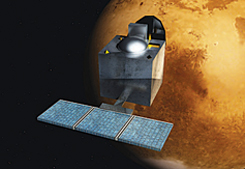
India's space parable needs to be told by gospel singers
AN INDIAN PSLV (Polar Satellite Launch Vehicle) rocket on June 22, 2016, delivered 20 satellites in orbit in one go. The launch vehicle had carried the Indian Cartosat-2C high-resolution optical Earth observation into a 507-km polar low Earth orbit along with 19 smaller satellites, including 13 U.S. commercial spacecraft. The vehicle achieved a high injection accuracy of 507 kilometers for Cartosat-2C. The target was 505 kilometers. This was yet another feather in the cap of country’s shining star, ISRO (Indian Space Research Organisation).
An ISRO statement informed that the “June 22 launch took the tally of total number of satellites that the PSLV series has put in space in the last 22 years to 113, of which as many as 74 belonged to foreign clients. A bland statement perhaps, but this proportion shows how India has been slowly “gaining ground — or gaining space”.
India’s space parable needs to be told by gospel singers.
It was only the other day that ISRO’s “Mars-craft”, Mangalyaan entered into planet Mars’ orbit. With this achievement on 24 September, 2014, during India’s deep space Mars Orbiter Mission (MOM), India emerged as the first country in the world to successfully send a spacecraft to that planet in its first attempt. The ISRO, thus, became the fourth space agency to reach Mars, after the Soviet space programme, the American NASA, and the European Space Agency (ESA).
The decision to plan the MOM lift-off on 5 November, 2013, was crucial because it was going to use the less powerful PSLV rocket C25. In the original scheme, ISRO had planned to launch the MOM on its new Geosynchronous Satellite Launch Vehicle (GSLV), but the GSLV has failed twice in two space missions in 2010, and the planners were uncertain about its cryogenic engine. Also, they did not want to wait for a new batch of rockets since that would have delayed the MOM project for at least three years. Launch opportunities for a fuel-saving transfer orbit occur about every 26 months and in this case they would have come up only in 2016, and then in 2018. The choice, therefore, was between delaying the MOM and switching to the lesspowerful PSLV. They opted for the latter, being fully aware that it would have been impossible to launch on a direct trajectory to Mars with the PSLV since it did not have the requisite power. Instead, ISRO launched it into an Earth orbit first and then slowly boosted it into an interplanetary trajectory using multiple perigee burns to maximize the Oberth effect. In astronautics parlance, the Oberth effect is explained by the scientific logic that the use of a rocket engine when travelling at high speed generates more useful energy than one at low speed. This scientific tactic, calling for great precision, was the hallmark of this scientific achievement.
In the shadow of the Martian endeavour, let us not forget to recall India’s first lunar probe on the Moon Vehicle, the Chandrayaan-1 launched by ISRO in October 2008, and which was operated until August 2009. The spacecraft had then used a PSLV-XL rocket. Back then, India emerged as the fourth country in the world to place its flag on the moon. Over a two-year period, the planners had intended to survey the lunar surface to produce a complete map of its chemical characteristics and three-dimensional topography. Of some importance was the fact that the lunar mission carried five ISRO payloads and six payloads from other space agencies including NASA, ESA, and the Bulgarian Aerospace Agency, which were carried free of cost. The Indian message to the world, of its benign objectives, was salutary.
Now the June 22 launch is giving the space launch companies a run for their money. It is believed that Space X, the California-based privately-funded space company in the US, and Arianespace, the French multinational, both leading satellite launch services providers are fearful of this commercial competition.
Operational launch costs are the points of concern and that is where ISRO’s PSLV emerges as the winner. Launching a satellite on an Arianespace’s Ariane-5 rocket for instance, costs about $140 million and, it is only after the subsidies that the cost comes down to about $100 million. The cost of launching a satellite aboard the Falcon-9 rocket of Space X goes further down by $60 million. But the average cost of the PSLV rocket of ISRO is merely $20 million or so. China is assessed to be lagging in the commercial launch business. China’s Long March rocket is nearly as expensive as Ariane-5. The Chinese haven’t found a way yet to cut its satellite launch costs.
Luckily for India, it is the market for the smaller satellites — of the kind it launched in June 2016 — which is steadily growing. There is a market forecast for nearly 200 small satellites expected to be launched up to 2023. What India needs in addition is to acquire the potential to use the same rocket to launch more than one satellite in differing orbits.
However, to become an allencompassing space superpower, India has to overcome a major hurdle. The limitation of the PSLV’s capacity to launch satellites up to a weight of only 1,800 kg needs to be overcome. The current operational Mk-II version of GSLV can handle payloads weighing up to 2,500 kg only. Therefore, to remain in the race, the development of the GSLV Mk-III needs to be pushed. Equipped with this launch vehicle, the ISRO will be capable of launching satellites weighing close to 5,000 kg and join in the ranks of big players. Currently, the US, the EU and Russia account for nearly 80 per cent of the global space market worth about $300 billion.
